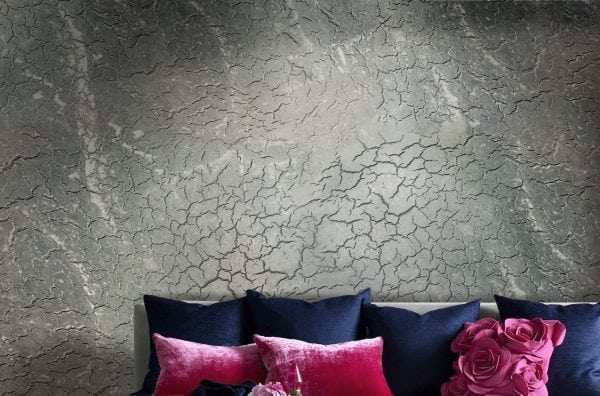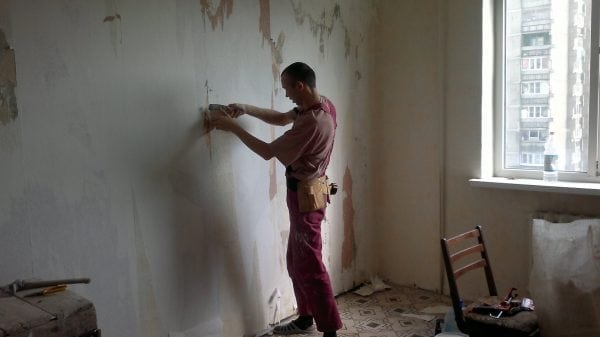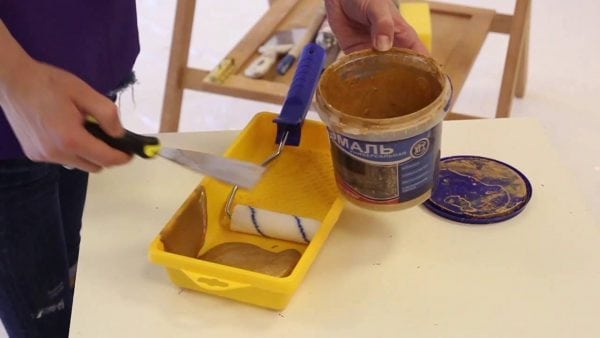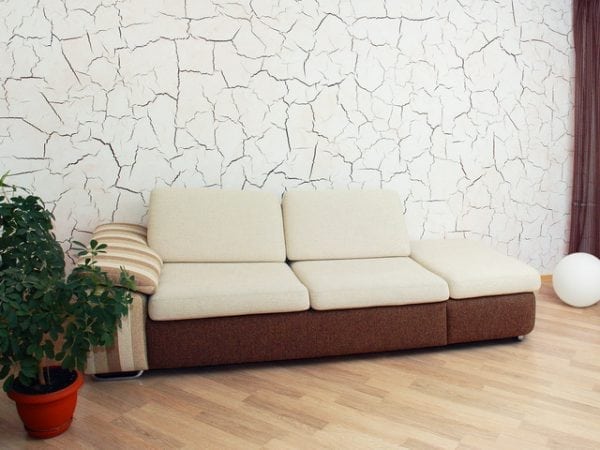Surface painting is a great way to give it an attractive appearance, as well as provide additional protection for the substrate from external influences. Painting is a fairly economical option for finishing work and does not require particularly high qualifications from the master.
- general information
- Effects and types of craquelure
- Painting technology
- Preparatory work
- Painting
- Secrets of quality painting
- One-component Craquelure Technology
- Application of two-component varnish
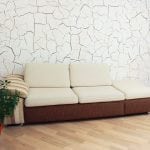
Since classical monophonic colors have become boring to many, non-standard methods of coloring, with which you can give the surface a special charm, are becoming increasingly popular. Paint with the effect of cracks allows you to fully achieve this goal - to create an original color, without losing the practicality of the painted surface.
to contents ↑general information
The use of paints with cracking effect can transform any surface. After processing, the material takes on its original appearance: the surface appears to be covered with cracks (craquelure effect). Moreover, the size of the cracks, as well as the tonality of the surface can be controlled. The cracking effect occurs due to the fact that the top layer of paint dries faster than the bottom and is devoid of elasticity.
Among the types of paints, acrylic compositions are considered the best choice, since they have many advantages:
- aesthetics;
- environmental friendliness and safety;
- affordability;
- vapor permeability (allows the surface to "breathe");
- high-quality concealment of defects in the base material;
- waterproofing properties (good for wet rooms);
- wide selection of colors;
- ease of use.
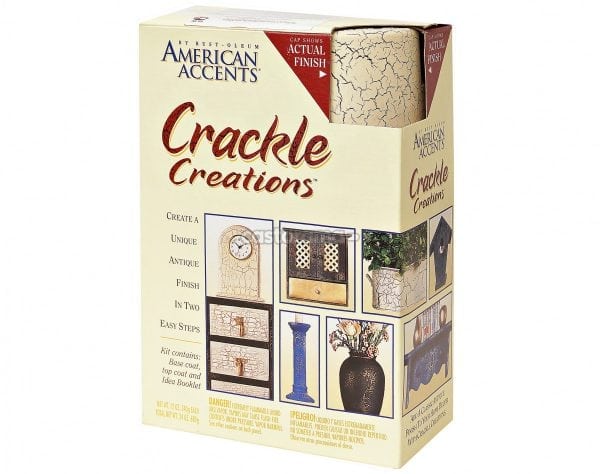
- Zinga paint (special conductive compound with anti-corrosion properties);
- fireproof paint "Polystyle".
Effects and types of craquelure
Using craquelure, you can give the surface a wide variety of effects, including:
- wild stone;
- streaming sand;
- water flow;
- water drops on glass;
- tree bark;
- porous skin;
- fabrics made from natural materials;
- velvet;
- pearls;
- marble;
- china.
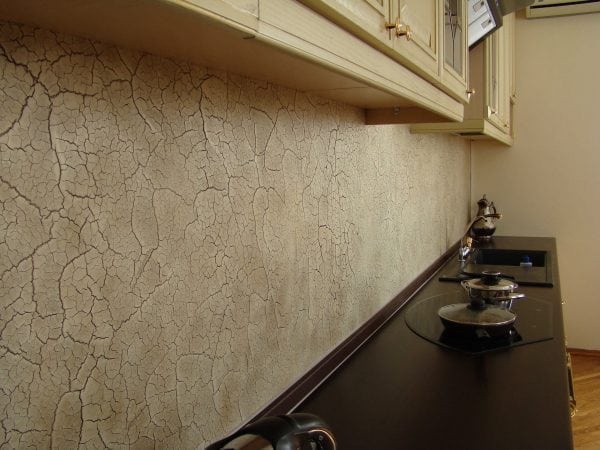
- The rustic style is created through the use of one-step varnish. Cracks look as if they had arisen a very long time ago.
- The surface in the classic style is a deep, distinct and often located cracks. Stylistics is often used for the background of large-scale decoupage works.
- The appearance of the wood makes the surface look like it is the bark of a tree. The cracks are deep and very common.
- The picturesque style is a lot of delicate thin cracks. The surface itself looks beautiful, and in addition, this style makes it possible to age-old small objects.
- Ceramics are often used to age dishes.
These are just a few of the existing craquelure techniques. If desired, you can use other techniques or create your own.
to contents ↑Painting technology
Preparatory work
Before you start painting, you need to carry out preparatory activities. The task is to ensure that the surface has a maximum of properties that will allow it to be well fixed on it with a paint and varnish material.
Note! A common preparation condition is the removal of old paint. This stage can be avoided experimentally, if the coating is strong enough and does not inspire concern. A little paint is applied to the old surface and, if the effect is satisfactory, you can continue painting the entire product.
Work execution order:
- Remove the old coat of paint. This is done with a scraper after surface treatment with an industrial hairdryer (a special wash is also suitable). If you need to remove the wallpaper or plaster layer, use a roller moistened with water, and then use a sharp spatula. To remove a tile or a thick plaster layer, a puncher or a more laborious method is used - a hammer and a chisel.
- To remove the formed garbage.
- Repair defects and cracks (if any). To do this, use a serpentine tape and putty.
- Sand the surface, removing even small bumps.
- Check surface evenness with a building level.
- Apply primer. This is an important step, since the primer provides good adhesion (adhesion) of dissimilar materials.
- When the surface is completely dry, perform the last action before applying the craquelure to the wall - sand the base.
Painting
The work is performed in the following order:
- Mix the contents of the can with the paintwork. Then pour the mixture into an open container specially designated for work. It is desirable that the bath was with a corrugated surface - this will allow you to conveniently remove excess paint from a brush or roller. Hard-to-reach surface areas are painted with a brush. Wide surfaces are most conveniently treated with a foam roller.
- Wait for the first layer to dry. Open the second can of paint and apply the contents to the previously painted surface. After some time, the surface will begin to crack as planned.
- After the cracking process is completed, it is desirable to coat the surface with varnish. This will improve the protective properties of the coating.
Secrets of quality painting
Coverage will be better if you adhere to a number of recommendations set forth below:
- The first layer dries faster after being treated with a building hair dryer.
- The quantity and quality of craquelure is controlled by varying the thickness of the finish. If you add water to the composition, the paintwork will become thinner, and cracks will be more rare and thicker.
- The width of the craquelure can be reduced by treating the surface several times.
- The direction of the picture is changed using certain tools. A paint roller or spray gun will help achieve uniformity of coating and natural cracking. A wide and flat brush creates the accuracy of craquelure. Movement with a brush vertically and horizontally will help to create a cell-like pattern.
- Small areas can be filled with paint with your finger.
One-component Craquelure Technology
The main requirement that must be observed in order to achieve a high quality coating is a stable temperature regime and a normal level of humidity. Drafts should be avoided.
Since this type of staining requires a certain skill, it is first worth practicing on a piece of unnecessary material.Thick plywood several millimeters thick is suitable. Prior to painting, the material must be primed and dried.
Paint (preferably acrylic) is applied using a roller. To get light cracks, use cream, blue, beige or silver colors. Azure gives a metallic or pearlescent shade. Paint should be applied in a thin layer - evenly, avoiding smudges and too abundant strokes. On average, the coating dries in 4-6 hours (the period depends on the air temperature and humidity in the room).
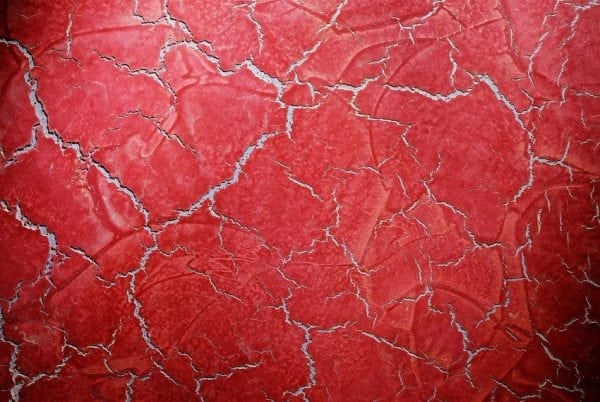
A Venetian or structural plaster is applied to the dried coating. To do this, use a wide spatula. Movements should be smooth, tangent, and not crushing. The nature of the movements can be either chaotic or schematic - depending on the creative intent. If applied structural plaster, the surface must be treated with sandpaper.
Plaster can be replaced with acrylic paint. It is desirable that the paint contrasts with the base. Decorative varnish or natural wax is applied to the painted surface.
to contents ↑Note! Since cracks appear after 7-10 minutes, you need to paint at a fast pace.
Application of two-component varnish
This option is difficult to stain, but gives a great external effect. The prepared base is painted in the desired color, and then dried. After this, a layer of craquelure varnish is applied. Apply varnish in a very thin uniform layer. As soon as the coating becomes hard and transparent, a second coat of paint material is made. After the second layer has dried, a top coat (paint) or plaster is applied.
Note! Since the paint material dries very quickly, it can adhere to the brush, violating the correct texture. To prevent such a development of events, the finishing layer should be applied as quickly as possible (plaster - within 5 minutes, paint - no more than a minute later).
When the coating is completely dry, proceed to grout. To do this, use dark oil formulations, dry pastel or gold powder. The substance is impregnated with a sponge, which is used for surface treatment. Excess material is removed with a cloth dampened in vegetable oil. The final stage is wiping the coating with a dry, clean cloth. It is advisable to fix the texture with a finish layer of transparent varnish.
To keep the surface attractive, care needs to be taken. The craquelure is easy to deform, it is unstable to mechanical stress. Such a coating is afraid of abundant moisture. It can only be washed with abrasive products or special chemicals. Wet cleaning is acceptable, but it should be carried out no more than once a week.

